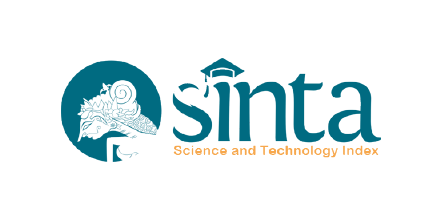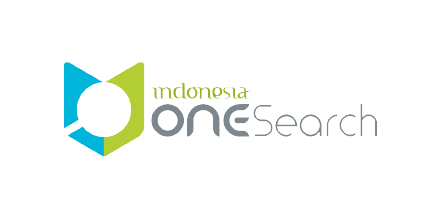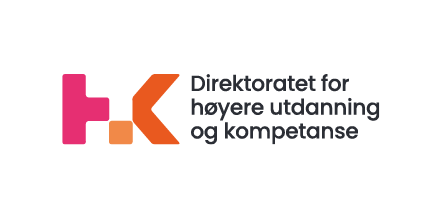Disability Profile and Accessibility Limitations among Persons with Physical Disability in Nigeria
DOI:
https://doi.org/10.21776/ub.ijds.2021.008.02.01Keywords:
Disability, Accessibility, Limitations.Abstract
Purpose: To evaluate disability profile and accessibility limitations among Persons Living with Disabilities (PLWDs) in Nigeria.
Methods: 61 PLWDs (44 men, 17 women) consented for this study. World Health Organization Disability Assessment Schedule 2.0, Facilitators and Barriers Survey for People with Mobility Limitations version 2, Barthel Index, and Medical Expenditure Panel Survey Questionnaires were used to obtain data on physical disability profile, level of access barriers, activities of daily living and quality of access to health care respectively. A proforma was used to collect information on socio-demographic characteristics. Data were analyzed using descriptive and inferential statistics. Alpha level set at p< 0.05.
Results: Prevalence of mobility, visual and hearing impairments were 60.7%, 21.3% and 6.6% respectively, There was a 11.5% rate of functional limitation while mild difficulty with cognition and life activities were reported among 96.7% and 65.6% of the respondents. 24.6% of the respondents had partial mobility dependence. There was low quality of access to health care (67.2%), high access barrier to home environment (73.8%) and transportation (93.4%).
Conclusion: The PLWDs have high mobility impairment and face barriers in accessing healthcare, transportation and environment.
References
REFERENCE
Linton, Simi (1998). Claiming Disability: Knowledge and Identity. New York: New York University Press.
Goodley, Disability Studies: An Interdisciplinary Introduction. London: SAGE Publications Ltd., 2011, 232 p.
WHO and World Bank (2011)26 pp. 35. World Disability Report, World Health Organization and The World Bank, 2011, page 238. Available. http://whqlibdoc.who.int/publications/2011/9789240685215_eng.pdf?ua=1
Altman, B. M., & Bernstein, A. (2008). Disability and health in the United States, 2001–2005. Hyattsville, MD: National Center for Health Statistics.
Loeb, M. E., Eide, A. H., & Mont, D. (2008) Approaching the measurement of disability prevalence: The case of Zambia. European Journal of Disability Research, 2, 32–43.
Meade, M. A., Mahmoudi, E., & Lee, S. (2015). The intersection of disability and healthcare disparities: a conceptual framework. Disability and Rehabilitation, 37(7), 632–641.
Fisher, Pamela; Goodley, Dan (January 2007). "The linear medical model of disability: mothers of disabled babies resist with counter-narratives". Sociology of Health & Illness. 29 (1): 66–81. doi:10.1111/j.1467-9566.2007.00518.x. PMID 17286706.
Lishner DM, L. p. (1996:). Access to primary health care among persons with disabilities in rural areas:a summary of the literature. J Rural Health., 12:45-53.
MacLachlan, M., & Swartz, L. (Eds.). (2009). Disability & International Development: Towards Inclusive Global Health. New York: Springer.
Scheer, J., Kroll, T., Neri, M., & Beatty, P. (2003). Access barriers for persons with disabilities: the consumers perspective. Journal of Disability Policy Studies, Disability Policy Studies, 2003,13: doi:10.1177/104420730301300404, 221-230.
Burns, T., Batavia, A., Smith, Q., & DeJong, G. (1990). Primary health care needs of persons with physical disabilities: what are the research and service priorities? Arch Phys Med Rehabil, 71, 138-143.
Dejong, G. (1997). Primary care for persons with disabilities. Arch Phys Med Rehabi., 76(suppl 3):S2-S8.
Allen, S.M., & Mor, V. (Eds.) (1998). Living in the Community with Disability: Service Needs, Use, and Systems. New York: Springer, 401 pp.
IOM . Disability in America: Toward a National Agenda for Prevention. Washington, DC: National Academy Press; 1991.
“Nigeria†Christian Blind Mission. Retrieved 28 January 2016.
Umeh, Ngozi C; Adeola, Romola. "Nigeria". African Disability Rights Yearbook. Retrieved 28 January 2016.
Nze, Emeka. "NPC Lacks Data on Persons with Disabilities- Chair". Centre for Citizens with Disabilities. Archived from the original on 12 February 2016. Retrieved 2 February 2016.
Olukunle AJ. THE BENEFITS OF THE HOUSE-FORM OF EARTH BUILDING IN NIGERIA. SURVEYING OF ORIGBO IN IFE-NORTH OF OSUN STATE. International Journal of African Society, Cultures and Traditions (November 2018).Vol.6, No.5, pp.38-48,
State of Osun (2020): LG’S , LCDA’S AND AREA COUNCILS. https://osun.gov.ng/government/executive/lgas/
Chidozie Mbada, Abraham Olawuyi, Olufemi O. Oyewole, Adesola C. Odole, Abiola O. Ogundele, Francis Fatoye. Characteristics and determinants of community Physiotherapy utilization and supply. 2019.
John Eng. Sample Size Estimation: How Many Individuals Should Be Studied? Radiology: Vol. 227, No.2. May, 2003. https/doi.org/10.1148/radiol.2272012051
Üstün TB et al. Disability and culture: universalism and diversity. Seattle, Hogrefe & Huber Publishers.
Mahoney FI, Barthel DW. Functional Evaluation: The Barthel Index. Md State Med J 1965;14:61-65.
Granger CV, Dewis LS, Peters NC, et al. Stroke rehabilitation: analysis of repeated Barthel index measures. Arch Phys Med Rehabil 1979;60:14-17.
Hobart JC, Thompson AJ. The five item Barthel index. J Neurol Neurosurg Psychiatry 2001;71:225-230.
Amala de Silva. A framework for measuring responsiveness. GPE Discussion Paper Series: No. 32.EIP/GPE/EBD.World Health Organization.
https://www.ot.wustl.edu/about/resources/fabs-mv2-389
Palmer, M. (2011). Disability and poverty: A conceptual review. Journal of Disability Policy Studies, 21(4), 210-218.
Ghana Statistical Service, 2012, 2010 Population and Housing Census; summary report of final results, Sakoa Press Limited, Accra, Ghana, pp. 12–13.
Ochola L. Dev Pract. 1996.
Mahmoud AO. The role of Muslim Health Workers in combating avoidable blindness in our society. At-tabib J 2006;1:26-8.
Badu et al., “Access Barriers to Health Careâ€CJDS 5.2 (June 2016).
Mohammed Awaisu Haruna .The Problems of Living with Disability in Nigeria. Journal of Law, Policy and Globalization. ISSN 2224-3240 (Paper) ISSN 2224-3259 (Online).
Odufuwa. Towards Sustainable Public Transport for Disabled People in Nigerian Cities Published in Stud. Home Comm. Sci., 1(2): 93-101 (2007). Available online at: http://www.krepublishers.com/02-Journals/S-HCS/HCS-01-0-000-000-2007-Web/HCS-01-2-073-07- Abst-Text/HCS-01-2-093-07-011-Odufuwa-B-O/HCS-01-2-93- 07-011-Odufuwa-O-B-Tt.pdf.
Ahmed, H. G., Alhassan, S. M., & Alshammari, F. D. (2017). Social welfare scheme; a neglected component of public health care services in Nigeria. MOJ Public Health, 5(3), 101-104.
Who,2001
Bascom, Graydon,"Transportation Related Challenges for Persons' with Disabilities Social Participation" (2017). All Graduate Theses and Dissertations. 5265. https://digitalcommons.usu.edu/etd/5265.
Mbada, C.E., Onayemi, O., Ogunmoyole, Y. et al. Health-related quality of life and physical functioning in people living with HIV/AIDS: a case–control design. Health Qual Life Outcomes 11, 106 (2013) doi:10.1186/1477-7525-11-106
Banks, L.M.; Kuper, H.; Polack, S. Poverty and disability in low- and middle-income countries: A systematic review. PLoS ONE 2017, 12, e0189996.
Gauvin L, Riva M, Barnett T, et al. Association between neighborhood active living potential and walking. Am J Epidemiol. 2008;167(8):944–953.
Verbrugge LM, Jette AM. The disablement process. Soc Sci Med. 1994; 38:1–14.
Meyers AR, Anderson JJ, Miller DR, Shipp K, Hoenig H. Barriers, facilitators, and access for wheelchair users: substantive and methodologic lessons from a pilot study of environmental effects. Soc Sci Med. 2002;55(8):1435–1446.
Shumwayâ€Cook, Aftab Patla, Anita Stewart, Luigi Ferrucci, Marcia A. Ciol, Jack M. Guralnik. Environmental Components of Mobility Disability in Communityâ€Living Older
Persons.https://doi.org/10.1046/j.1532-5415.2003.51114.x
Convention on the Rights of Persons with Disabilities (CRPD). United Nations 2006.
Meriläinen A, Helaakoski R. Transport, poverty and disability in developing countries. Washington: World Bank; 2001.
Henry, T. (2009). Policy On Persons with Disabilities, Office of the Prime Minister (Social Services Delivery).
Griffin, K. W. (2000). Building type basic for Transit Facilities.
Habert, G. and T. Blank (1992). Building Design for Handicapped and Aged Person. United States: McGraw-Hill, inc.
Measuring Health and Disability: Manual for WHO Disability Assessment Schedule (WHODAS 2.0) / edited by TBÜstün, N Kostanjsek, S Chatterji, J Rehm. ISBN 978 92 4 154759 8 (NLM classification: W 15) World Health Organization 2010.
Mugueta-Aguinaga I, Garcia-Zapirain B (2017). "Is Technology Present in Frailty? Technology a Back-up Tool for Dealing with Frailty in the Elderly: A Systematic Review". Aging and Disease. 8 (2): 176–95. doi:10.14336/AD.2016.0901. PMC 5362177. PMID 28400984.
Downloads
Published
How to Cite
Issue
Section
License
Copyright (c) 2021 Chidozie Emmanuel Mbada, Oluwatoyin Olatoye, Funminiyi Olatoye, Clara Fatoye, Isaiah Adewale Oyewole, Kayode Israel Oke, Opeyemi Ayodiipo Idowu, Jamiu Opeyemi Yusuff, Daniel Oluwatimilehin Ibidunmoye, Francis Fatoye

This work is licensed under a Creative Commons Attribution-NonCommercial 4.0 International License.















